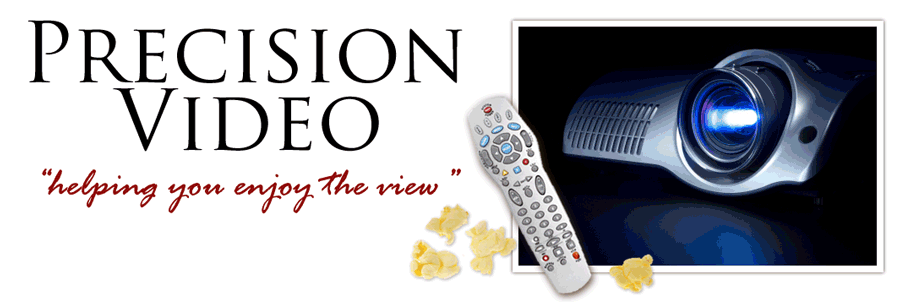Since I am firmly committed to the Blu-ray format in my theater, it was only a matter of time before I felt the overwhelming need to add the format to my living room AV system. With more and more TV shows being released on hi-def disc I couldn’t quite bring myself to buy my favorites on DVD when they are available on Blu-ray. To that end, I recently installed Panasonic’s latest entry, the DMP-BD50.
The BD50 is Panasonic’s third generation player and its most feature-laden to date. In addition to all the excellent video playback features carried over from the BD30 it supports full PCM and 5.1 analog decoding of ALL lossless sound formats. This is the main reason I waited for this player rather than buying the less-expensive BD30 for my living room. The BD30 only supports lossless formats as bitstreams. You will need a decoding receiver like the Onkyo SR-805 to fully enjoy the improved sound Blu-ray has to offer. The BD50 works nicely with my Denon 3806 by converting all sound formats to LPCM which the receiver accepts through its HDMI 1.1 inputs.
Aside from the improved sound support, the BD50 appears identical to the BD30. Though I have not compared them side-by-side on the same display, I can see no difference in image quality between the two. I believe both players have the same video sections. Menus and setup are pretty much the same. 24fps and DVD upconversion to 1080p are supported and you can force both resolution and scan rate if your display doesn’t play nice. As I am still using an older 720p Samsung TV, I set the BD50 to 720p and 60hz. Sound setup was a bit different. In the Audio menu, you can specify the type of digital output independently for Dolby and DTS formats. These settings will hold for Blu-ray and DVD playback. This means if you’ve specified PCM for Dolby and DTS formats, your receiver will say “PCM” or “Multi Channel” whether you play a Blu-ray or a standard DVD. For those of you wondering, I can’t hear any difference between audio that’s bitstreamed or decoded to PCM. I certainly CAN hear a difference between compressed (Dolby Digital & DTS) audio and uncompressed audio (Dolby TrueHD & DTS-Master Audio). Detail and clarity are much better and the dynamic range of even an average soundtrack is larger than the best mixes on DVD. I don’t believe you have to have a killer system to enjoy the benefits of lossless sound. My living room is far from ideal and I don’t have expensive gear. I do know that the soundfield is larger, the sense of surround is greater and detail is improved. I know there are other media formats vying for your entertainment dollars but Blu-ray is the only one to offer such a huge improvement in audio quality.
As I stated, there seems to be no difference in image quality between the BD30 and the BD50. DVD upconversion isn’t too bad. It’s not the equal of a high-end processing solution like Anchor Bay or HQV but I think it does a better job than the cheap upconverting players I’ve encountered. It certainly beats the video processing in my Samsung DLP. I noticed a few combing artifacts and occasional jaggies but images were noise-free and color fidelity was excellent. There was no added edge enhancement and dynamic range was superb. Though this player did not ace the HQV test disc, I still would consider it an excellent DVD player. The next step up would be Oppo’s $400 983 or Denon’s $850 2930. The BD50 will play standard audio CDs but not DVD-Audio or SACD. It will play all burned media provided it has been finalized. It also accepts SD memory cards like the BD30 for viewing of photos and home videos.
The BD50 is one of the first Profile 2.0 players on the market. It has the required Ethernet connection on the back panel. It does not however have sufficient internal memory. For this, you must install an SD card. I did not test the BD-Live features of this player but I did install a memory card just in case. They’re so cheap now; you might just have one lying around the house!
Obviously, I am quite happy with this new player. At $599 it’s not cheap but the bleeding edge never is. I wasn’t sure I would be as thrilled with Blu-ray on a 50-inch 720p display as I am in the theater with its 92-inch screen but I am. The image quality is simply wonderful and the audio is equally amazing. There’s just nothing like an artifact-free color-saturated picture. It’s much more difficult to achieve that from Standard DVD. Even an average-quality Blu-ray is superior to the best DVD transfers. I’m all about removing video processing from the signal path whenever possible. Now we have a format that allows this and I think we need to embrace it. Of course there will be something better in the future but when is that not the case? Blu-ray is the best video and audio format going right now and is likely to be for the next few years. Don’t miss out on the opportunity to get the most out of your display right now!
Thanks for reading and enjoy the view!
Wednesday, August 20, 2008
Panasonic DMP-BD50 Blu-ray Player Review
Labels: bd50, bd50 review, blu-ray, blu-ray player, dmp-bd50 review, panasonic
Subscribe to:
Posts (Atom)







